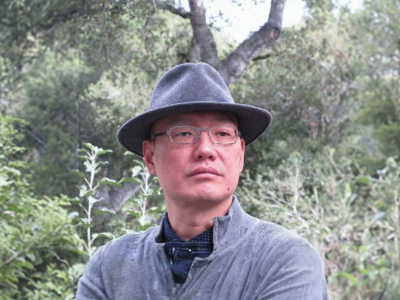
Minghui Hu
Associate Professor of History, UC Santa Cruz
Getting students to engage with JSTOR’s library of scholarly content
The University of California, Santa Cruz, one of the 10 UC-system campuses, is home to approximately 17,000 undergraduate students.
The university implemented Hypothesis in its humanities department as a way to encourage students to more deeply engage with course content — specifically, scholarly content that faculty and students access through Hypothesis’s integration with JSTOR. The integration allows faculty and students to engage with JSTOR’s 12 million articles, books and images directly within the Hypothesis interface.
Challenge
Minghui Hu, associate professor of history at UC Santa Cruz, had a head start.
Prior to the pandemic, he’d already taught two of his courses online. So when it was time to move his other two courses online as part of a campus-wide shift to remote learning in Fall 2020, he knew he’d need help engaging students new to learning online.
Hu decided to take action. “I wondered, ‘How do we increase interactions with our students? How can we keep students engaged while they’re learning online?” Hu says.
Hu had long observed that his students were becoming less attentive and more distracted. With the psychological toll of the pandemic, the trend was only getting worse.
“They’d missed out on a lot of things, like studying abroad,” Hu says. “But I saw it as my job to reach them, and to help them catch up.”
Solution
Why Hypothesis?
When looking for tools to encourage student interaction, Hu considered a number of options. “What stood out about Hypothesis is that it not only has a social aspect, it creates a shared text in the classroom,” Hu says.
The use case for Hypothesis and JSTOR
Hu used Hypothesis and JSTOR as a way to encourage students to engage with scholarly content, which his students typically found more challenging than a chapter from a textbook.
Use case for Hypothesis and its JSTOR integration
Hu asked his students to annotate scholarly content from the JSTOR library that he and his students accessed directly through Hypothesis in four primary ways:
To look up terms and explain their meaning and relevance within the context of the reading.
To ask questions about the text to faculty.
To summarize portions of the text, with a focus on accuracy, not opinion.
To respond to their peers’ annotations in particular, to their peers’ questions about the text.
To Hu, Hypothesis offered a way to make scholarly content more accessible to undergraduate students. “These articles are designed for grad students and scholars, so it challenges undergraduates and pushes them beyond their comfort zone. Hypothesis helped build a bridge of understanding for these articles.”
Outcomes
Throughout the implementation, Hu noticed a number of benefits not only for students, but for himself.
Benefits for faculty:
- Hu loved the simplicity of being able to engage with JSTOR content directly within the Hypothesis interface, and with using JSTOR to find and choose articles that fit his course. “I couldn’t believe how easy it was,” Hu says.
- He also valued the insight that Hypothesis gave him into student engagement. “I can see right in the LMS when students log in, how much time they spend with the text, and how often they’re engaging with each other. That’s very, very useful,” he says.
This transparency marks a big departure from earlier in his career. “For 15 years, I assigned readings without knowing for sure that students read them. Now, I know.”
Students loved using Hypothesis
- The biggest benefit for students that Hu observed is that Hypothesis turned reading from a solitary experience to a social one. “The social element of Hypothesis reminds students, ‘You’re not alone reading this,’” he says, adding that Hypothesis is “very effective in getting students to talk to each other about the text.”
- Hypothesis also gave students visibility into how their peers approached the reading. “They can see what quality looks like,” Hu says.
- While students found the scholarly content to be challenging, they appreciated that their hard work was seen by their instructor and increased the value they received from the coursework. “They love it when they get rewarded,” Hu says.
Ready to give students a whole new way to engage with scholarly content? Fill out the form below to get started:
